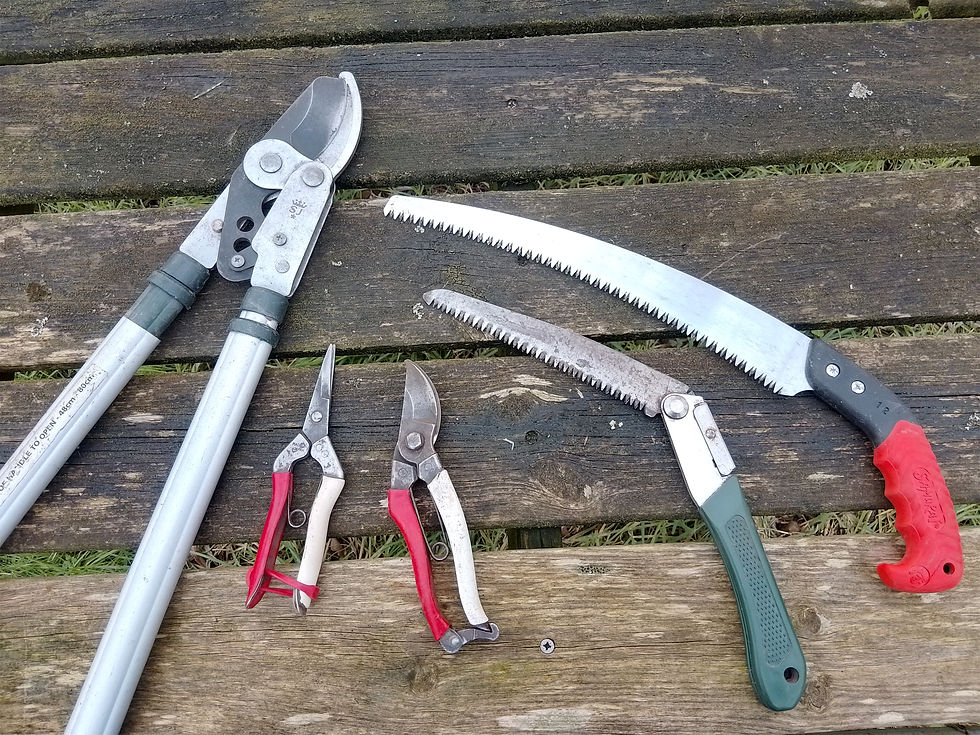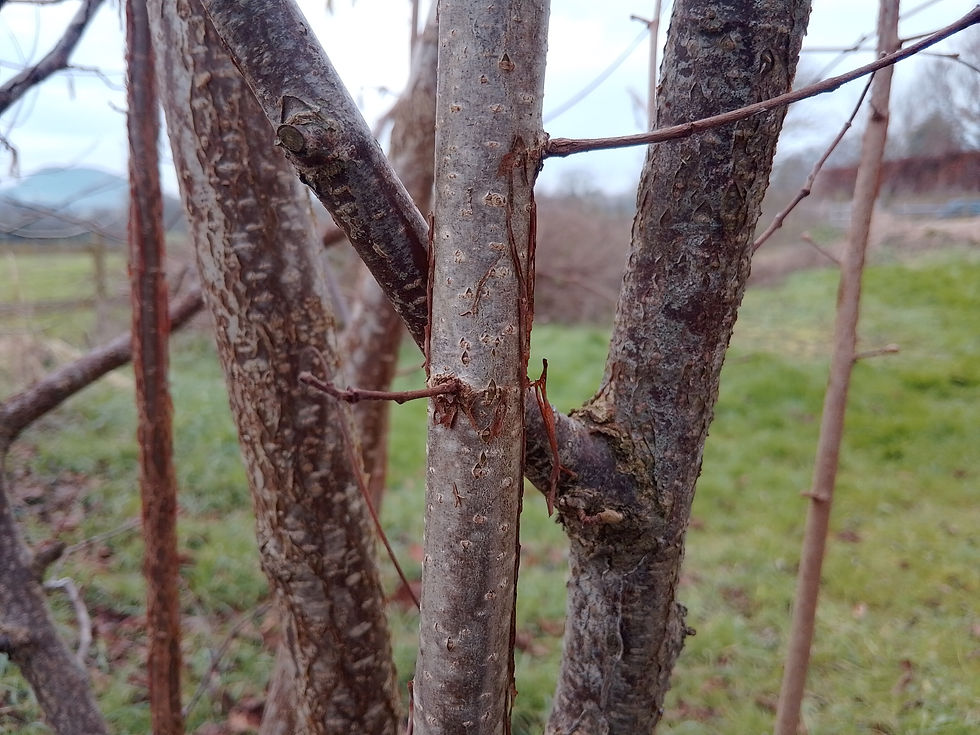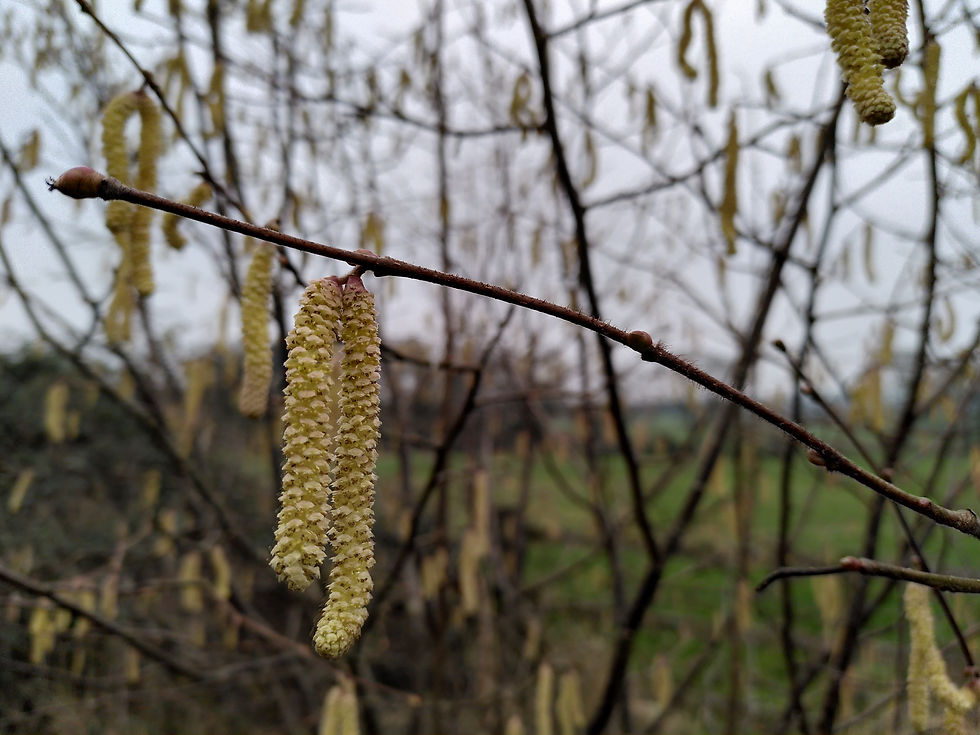Pruning the Wildlife Friendly Garden
- Nancy Lowe
- Jan 20
- 4 min read
In a natural garden, the tendency is often to assume to let woody plants live out their natural lives without intervention. While this can work beautifully, unfortunately, in some cases, it isn't the best policy. Something I see a lot - and despite knowing better have also been guilty of myself - is the classic of planting shrubs too close together – there are just too many lovely ones to fit in! But sadly, if these shrubs are allowed to simply grow away without any care and attention from us gardeners, they will certainly not be living their best lives. They tend to end up cramped and at risk of injuring each other as they reach out their branches each year. Thankfully, good pruning can definitely help here.
Another issue that sometimes crops up is simply that ornamental shrubs, bred for abundant flowers are no longer flowering at their best. This is very often because it's the young, vigorous stems that flower well. As wildlife gardeners, good flowering and any subsequent fruiting or nutting that might take place, is really important as a food source for pollinating insects and fruit or nut loving birds and animals. Again, good pruning remedies this problem. I have some simple pruning tips below to help keep your woody plants in great shape - both for increased flowering and to prevent the damage caused by being too cramped up.
In Winter, for those trees and shrubs that have dropped their leaves back in Autumn, this is the perfect time to give them a little trim. The tips I'm about to pass on can, in fact, be done at any time of the year, but Winter's bare stems makes the job a lot easier and pruning at this time will lead to more vigorous regrowth as your shrubs or trees bounce back from their trim.
So all you need to remember is DDD and C. The three Ds and a C. And remember that these tips are for deciduous plants only – those that have bare branches over Winter.
Firstly, we’re looking for Dead, Damaged and Diseased wood – The Three Ds. Remove anything that is Dead, Damaged or Diseased. In most instances, you would cut back growth to a healthy side branch, that is pointing outwards from the centre of the tree or shrub, so it will leave a natural looking shape. If only the tip is damaged or has died back, you need only trim back to a well placed bud – again one that is facing outwards, away from the centre of the tree, so next year’s growth will grow outwards, rather than cross in towards the centre. If there is a larger portion that is damaged, dead or diseased, you may want to cut back a whole branch right to its base, where it branches out from its parent branch or from the trunk of the plant. Cut neatly, using a pruning saw, loppers or for growth less than a pencil thickness, using secateurs.

And then you want to look for our C factor - Crossing branches. This is badly placed branches – branches that are crossing in and right across the centre of the plant and branches that are crossing over each other, possibly rubbing up against each other and damaging their bark. Again, cut these back to a well placed side branch or bud – one that faces out from the centre. If two shoots or branches are rubbing up against each other, cut back the weakest one, or the one that leaves the most sensible shape for your plant – where all branches are ultimately reaching outwards from the centre.


An open shape, with outward facing branches prevents future problems with crossing branches and keeps air circulating through your plant, helping prevent disease. All that DDD wood that has been removed has further opened up air space and is allowing more light in too. Crucially for us wildlife gardeners, the increased sunlight that can now reach through your whole plant will encourage more flowering growth and therefore more nectar, fruit, nuts or seeds for your garden wildlife. The trim itself - especially if done in Winter - will stimulate new growth, new young shoots. These will have more vitality and will produce even more flowers for you and your wildlife to enjoy.

I really hope these simple tips are as helpful to you as they’ve been to me over the years. Just remember that DDD and C. If you’d like some further support though with pruning or renovating your shrubs in a wildlife sensitive way, I offer gardening one to ones, so do get in touch!

コメント